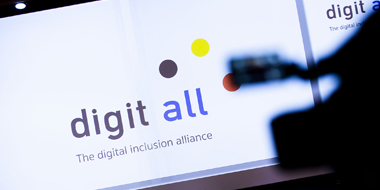Data & AI
The easiest way to anonymize public sector data before publication
01/07/2021 | Written by: Desmin Dekker
Categorized: Data & AI | Government
Share this post:
Starting in 2022, the new WOB/WOO legislation will be implemented in the Netherlands, requiring public authorities to proactively publish data. However, in response to privacy concerns, the published documents need to be anonymized before publication. How will public authorities keep up with the demands of anonymizing large amounts of documentation while data sources are growing exponentially?
The strict new WOB/WOO regulations are being introduced in response to criticism about the Dutch Government’s alleged lack of transparency concerning public governance. It changes the paradigm from public authorities reacting to citizen requests for information to proactively publishing all data by default.
Delivering anonymized data
The task of anonymizing data is currently extremely labor-intensive, with large sections of text being blacked out, making it difficult for anyone to read and understand the contents, often creating feelings of distrust and frustration amongst citizens who have frequently waited for long periods of time to receive the requested information.
An alternative is to use a new solution from You-Get and IBM that identifies any personal information that could be used to identify a person and determines the context that the personal information is used in. In this way, the Automatic Anonymization & Publication Workflow software can replace this identifiable data with generic labels, for example “Witness 1”, “Citizen 2”, or “Civil Servant 3”. The result is a readable text that is fully anonymized to comply with the latest privacy regulations.
If a public authority prefers a manual process, the solution can accelerate this by automatically suggesting what personal information should be blacked out, leaving as much as possible readable and understandable for the recipient.
How to deliver anonymized data
While the previous system of blacking out personal data was mostly done manually, this new system is automated with a manual check. This semi-automated approach recognizes the potential risk from a mistake being made and utilizes a manual check to mitigate this.
After the automation step has replaced the personal data with generic labels, an expert from the public authority receives both the original and the anonymized versions to check that the text has been anonymized correctly. This process is more efficient, saving the public authority both time and resources.
The Automatic Anonymization & Publication Workflow software also offers other benefits for public authorities. It simplifies and streamlines citizen requests for information as the AI system that is used to identify personal data can also be used to locate information in connected data sources before anonymizing these documents for publication. Furthermore, it enables the public authority to create structure in their publication process, giving them more insights into the type and number of open requests and the ones near their due date.
Automatic Anonymization & Publication Workflow
You-Get and IBM offer a unique solution for public authorities looking to anonymize documents in a secure and scalable way. Supported by IBM Cloud Pak for Automation and IBM Cloud Pak for Data, the solution integrates with existing IT infrastructure and systems to empower public authorities to efficiently anonymize their data while still sharing information with their citizens in a transparent, citizen-friendly, and trust-inspiring way.
Learn more
Are you interested in learning more about the Automatic Anonymization & Publication Workflow software?
Contact Desmin Dekker at You-Get for a full demo and more information about how the Automatic Anonymization & Publication Workflow software can help your public authority.
Email: ddekker@you-get.com
Phone: +31 20 737 02 76
Mobile: +31 6 29 45 72 37
Website: https://you-get.com

Director RPA & AI @ You-Get
IBM, together with 30 organizations, signs the Digital Inclusion Charter
“I personally believe that inclusion is a basic human right and should be part of the DNA of every leader. Since a long time, inclusion is one of the core values of IBM. The Digital Inclusion Alliance is for me a great initiative, where we can turn our values into action. We’re all in this […]
What is human-centred AI and why is it important?
Artificial Intelligence (AI) has the potential to solve many of the most difficult problems of today and tomorrow, impacting every aspect of our lives. Most people are likely to agree that AI should be used to solve problems and make (all) humans more prosperous and healthier. Actually, achieving this is easier said than done, […]
Dutch Ministry of Defense signs contract for modern and flexible IT
State Secretary Barbara Visser of Defense signed a contract with IBM, on behalf of the market consortium Athena (IBM/Atos/ Unica) to start in 2021 with the realization of a renewed, future-proof IT infrastructure. Focus will be on the IT infrastructure-parts that have the most added value for operational actions. The Ministry of Defense service […]


